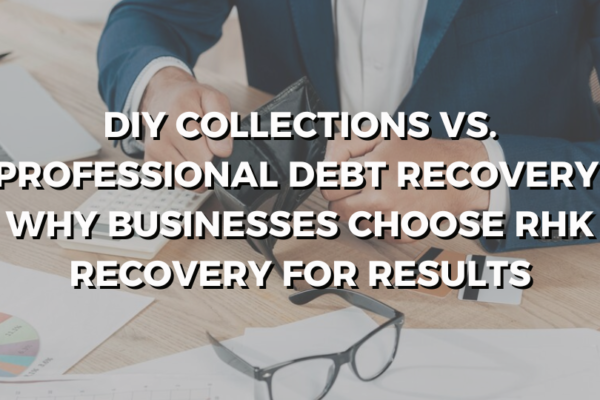Extending credit to clients is often a necessary component of sustaining growth and fostering lasting relationships. However, it also comes with inherent risks. To mitigate these risks and make informed decisions, it’s crucial for businesses to conduct thorough credit research on potential and existing clients. Here’s a comprehensive checklist to guide businesses through this essential process:
1. Understand the Client’s Financial Health:
Before giving out credit, we really need to take a good look at the client’s financial situation. That means checking out their balance sheets, what they earn, and how cash flows in and out. We’ll crunch some numbers, looking at things like how liquid they are, can they handle their debts, and are they generating a consistent stream of revenue? Understanding where they stand financially gives us a heads up on how likely they are to pay back what they owe.
2. Assess Payment History:
Checking out how reliable a client is with money comes down to their payment history. It’s smart to take a close look at how they’ve settled up with past creditors. Keep an eye out for any patterns of late payments or not paying at all, as that can really tell you a lot about how trustworthy they are. Also don’t forget about credit bureaus – they are gold mines for this kind of info. Their reports give you the scoop on a client’s payment habits and a bigger picture of their financial behavior over time. Using these reports can help you figure out how solid a client is financially, which is an important step to take when you’re thinking about any future money dealings with them.
3. Evaluate Industry and Market Trends:
Diving deep into industry and market dynamics is key to securing a client’s financial future. Imagine navigating a sea of opportunities and challenges – that’s exactly what it feels like to peel back the layers of a client’s industry. It’s about understanding the pulse of the market growth, the fierce competition, and the rules of the game set by regulations. This isn’t just research; it’s a quest for insights that can help us forecast storms on the horizon and chart a course to not just survive but thrive in turbulent markets. By exploring these critical elements, we’re not just devising financial strategies; we’re building a fortress to protect and propel our clients forward amidst economic ups and downs. Let’s embark on this journey together, turning uncertainties into stepping stones for success.
4. Consider External Factors:
Economic conditions, geopolitical risks, and regulatory changes can all affect a client’s ability to meet their financial commitments. It’s important to keep an eye on big-picture stuff like GDP growth, inflation, and interest rates to get a sense of the overall economic climate. Also, consider how geopolitical events and new regulations might impact your client’s business and financial health.
5. Utilize Credit Scoring Models:
Credit scoring models are like a smart system for figuring out credit risk. They look at your credit history, money matters, and what’s happening in the market. You can either use some really smart algorithms already out there or create your own to fit what your business needs. These models help make sense of the numbers, so you can make credit decisions based on solid data.
6. Establish Credit Limits:
Based on our credit research findings, let’s set the right credit limits for each client to keep our risk exposure in check. We should look at things like how strong the client’s finances are, their payment track record, and what’s going on in their industry when deciding on credit limits. Putting in place solid credit limit policies helps us manage risk smartly and supports our business growth in a friendly manner.
7. Monitor Ongoing Performance:
Credit research is far from a one-time endeavor; it’s a continuous, dynamic process that demands constant vigilance. To effectively manage and mitigate potential credit risks, it’s crucial to regularly monitor not just the client’s financial performance, but also their payment behaviors, and the broader market dynamics. These elements can offer early warning signs of credit deterioration that, if caught early, can be addressed more effectively. Implementing robust monitoring mechanisms, such as conducting regular credit reviews and setting up alerts for any deviations from normal patterns, is essential in proactively managing credit exposures. By staying ahead of these potential issues, financial professionals can safeguard against unexpected losses and maintain the health of their credit portfolios.
8. Mitigate Risk Through Diversification:
Spreading your credit risk across different clients is a good way to avoid putting all your eggs in one basket. It helps you avoid major troubles if one client can’t pay up. Try to mix things up by dealing with clients from various industries, places, and sizes. This way, if credit losses happen, they won’t hit you as hard, making your overall risk management a lot smoother.
9. Establish Clear Credit Policies and Procedures:
Create detailed credit policies and procedures that spell out how to give credit, including approval steps and ways to lower credit risk. It’s crucial to align these policies with both the rules and what’s best in the industry to stay compliant and competitive. Clear credit policies create a consistent, transparent, and accountable vibe in how decisions are made. This strategy helps cut down financial risks and boosts customer trust and your business’s reputation by guaranteeing fair credit practices.
10. Foster Open Communication:
Keep the lines of communication with clients open to make sure everything is clear and any worries about credit terms or payments are sorted out quickly. Talking things through proactively builds trust and helps nip potential credit issues in the bud. Work together with your clients to come up with win-win solutions and build stronger partnerships for the long haul.
Thorough credit research is essential for businesses to make informed decisions when extending credit to clients. By following this comprehensive checklist, businesses can effectively assess credit risks, mitigate potential losses, and foster sustainable growth while maintaining healthy client relationships. Remember, diligent credit research today safeguards against financial pitfalls tomorrow.
If you have any questions about how RHK Recovery Group can assist you in navigating the complexities of credit research and risk management, don’t hesitate to reach out to us. Our team of experts specializes in providing tailored solutions to help businesses optimize their credit processes, mitigate risks, and foster growth. Whether you need guidance on credit analysis, risk mitigation strategies, or implementing robust credit policies, we’re here to support you every step of the way. Contact us today to learn more about how RHK Recovery Group can empower your business to make informed credit decisions and achieve financial resilience.







